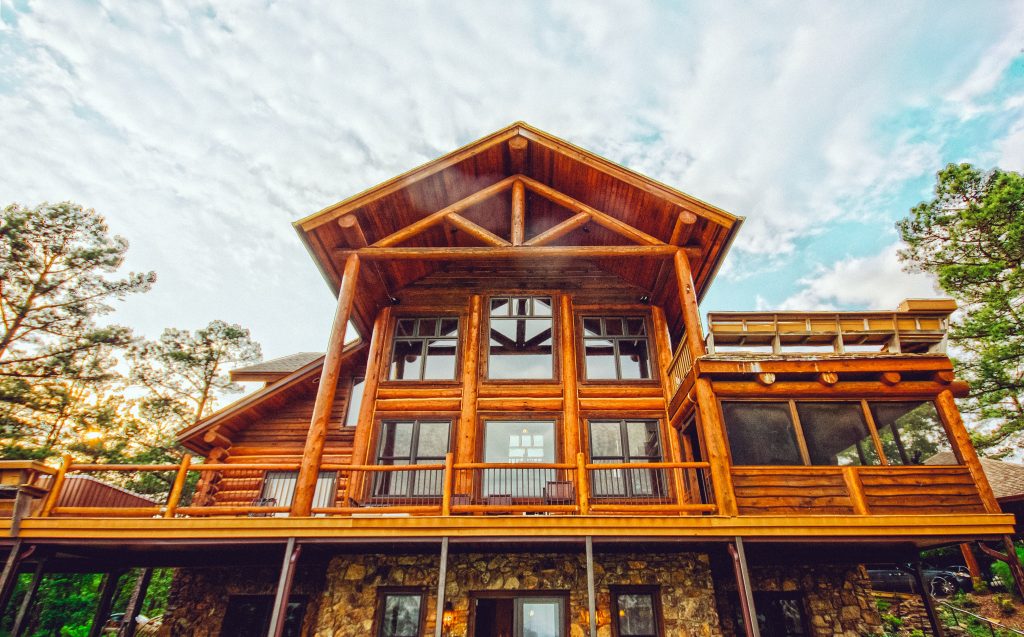An Argument for Large Cabins: The Win-Win-Win

When thinking about what size cabin to invest in, there are many factors to consider. Some investors are limited on price and have to stay in the smaller range, but others don’t care about the size or the number of cabins, they’re just looking for the highest return.
On average, we believe that large units are the way to go for the owner, guest, and manager. Don’t get us wrong, small units can be profitable too, but here we want to show you the benefits of a larger unit.
Large cabins are great for big families who want to stay together on their trip. Let’s say you have a party of 14, and let’s assume that they are adults and renting seven small cabins is an option (though very hard to find). Would you rather pay $150 a night for one-bedroom cabins that can sleep two, or $800 a night for a seven-bedroom that can sleep 14? But that’s not the only consideration. What is the cost per person? And don’t forget cleaning fees! There is a minimum cleaning fee per unit because cleaning cabins in the mountains is different from hotel cleaning.
Now let’s plug in some average numbers and look at the breakdown for a single night’s stay. Most major websites add booking fees ranging from 8-15% that the guest has to pay, so we are going to add those as well to get a realistic look at the guests’ cost. The percentage is actually a sliding scale that is higher for lower-dollar bookings, so it’s another factor that is worse for renting small units, but we’ll just choose 12% for each option for our example.
Let’s look at 7 cabins for a single night:
| 7 Cabins @ $150 per night | $1,050 |
| 7 Cleaning Fees @ $100 | $700 |
| _ | |
| Pre-Tax Total | $1,750 |
| Local and State Taxes @ 13% | $227.50 |
| Website Booking Fee @ 12% | $210 |
| _ | |
| Total Price for 7 Small Cabins | $2,187.50 |
Now let’s look at a seven-bedroom cabin for a single night:
| 7-Bedroom Cabin @ $800 per night | $800 |
| Cleaning Fee | $225 |
| _ | |
| Pre-Tax Total | $1,025 |
| Local and State Taxes @ 13% | $133.25 |
| Website Booking Fee @ 12% | $123 |
| _ | |
| Total Price for 1 Large Cabin | $1,281.25 |
The percentage-based booking fee and percentage-based taxes inflate every dollar of increase for cleaning fees and rent, and of course, the owner and manager don’t get to retain those increases either. It’s great for Airbnb and Uncle Sam, but not for travelers, owners, or managers.
Most travelers want to be together. That’s the point of vacation—to get further from work and the world and get closer as a family. Even if you can find a bunch of small cabins close together, most people (especially mothers) want to be under the same roof.
One large cabin is better for an owner in many ways. Building one large cabin is still much more affordable than several small cabins. Although they don’t have to worry about management, the owner still has a certain amount of effort, thought, and risk for every cabin. For example, their insurance will be more on multiple cabins than on a single cabin. There is a greater economy in consolidation than in number in this case.
And finally, larger units are better for managers too. We really want to excel at customer service, but that is only possible with an appropriate manager-to-property ratio. Just like a good student-to-teacher ratio, even a great teacher can’t teach 100 students on a personal level. A good manager without a solid team behind them can’t effectively manage even 25 cabins; there is just too much maintenance, supplies, cleaning, and customer service to do the job well.
So if you’re considering purchasing a property strictly for investment or for personal use and investment use, we hope you’ll consider if large is right for you.